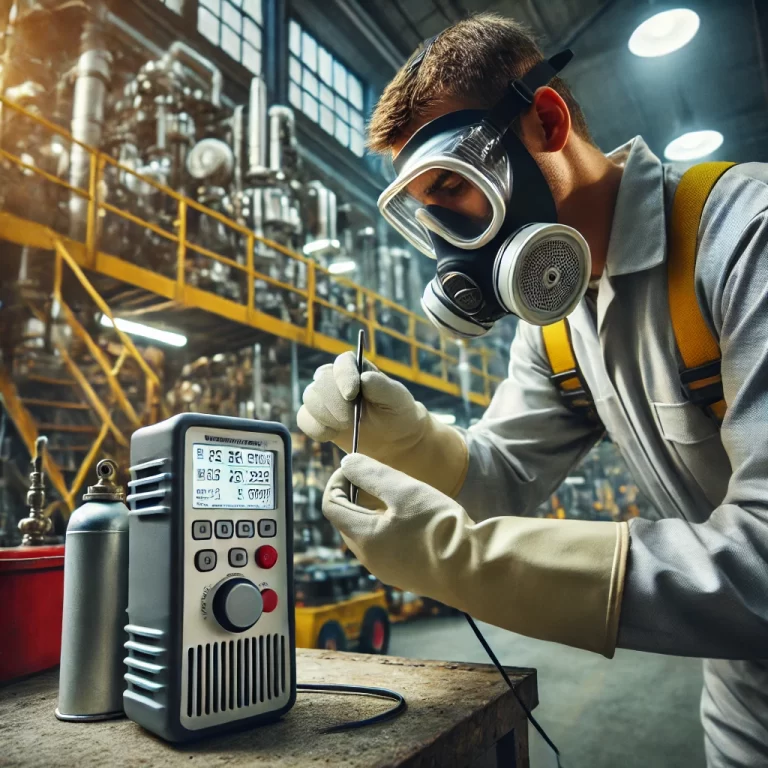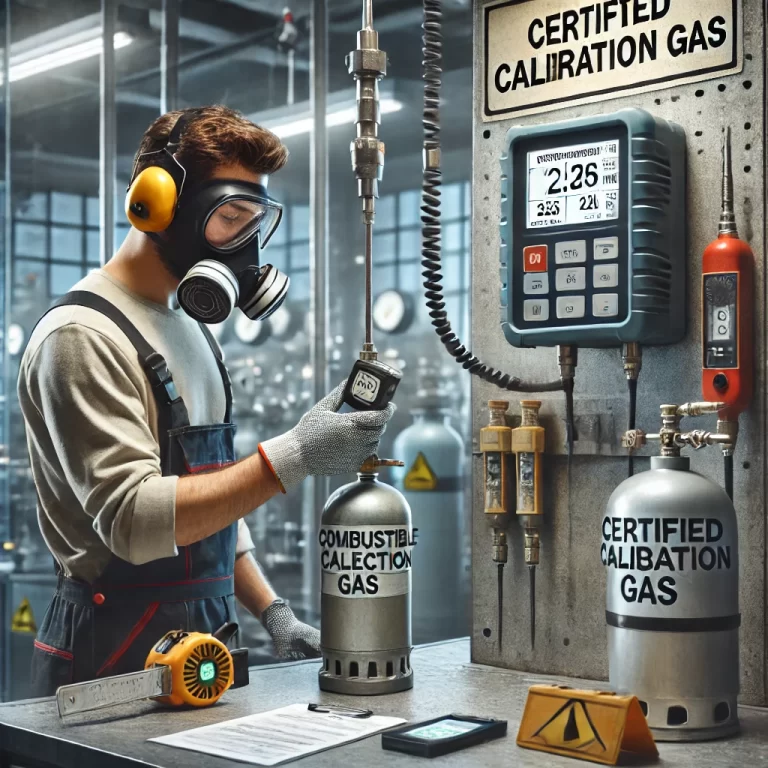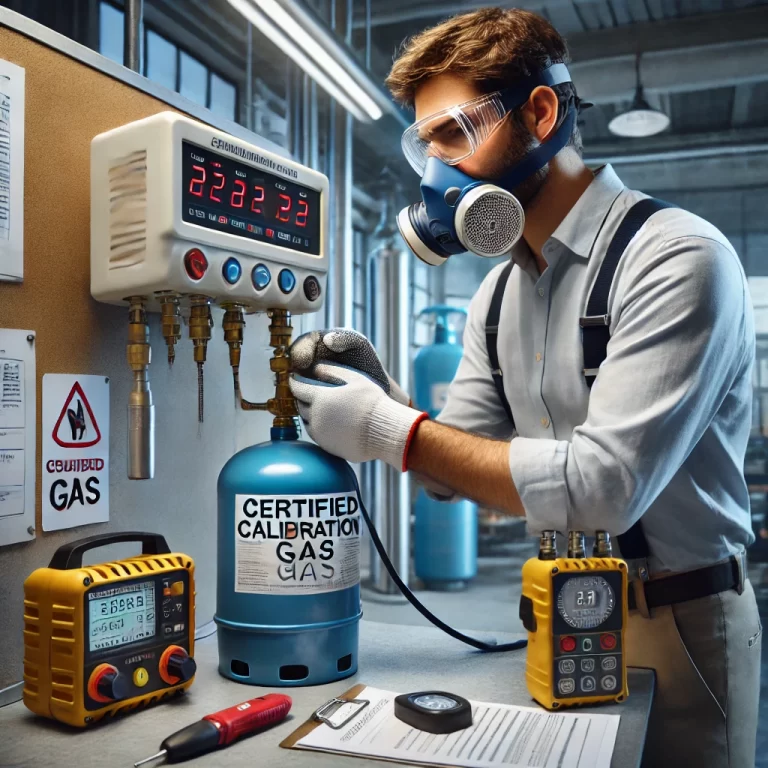Combustible gas detection alarms, also referred to as combustible gas detectors or point-type gas alarms, play a critical role in ensuring industrial safety. These devices detect combustible gases such as hydrogen, methane, propane, isobutane, and acetylene, among others. Proper calibration of these instruments ensures their accuracy and reliability, helping to safeguard lives, property, and production operations. This article details the step-by-step process for calibrating and verifying combustible gas detection alarms.
1. Calibration Gas Standards
To accurately calibrate combustible gas detectors, the standard gas used for calibration must match the type of gas being measured. Key steps include:
Gas Types: Combustible gases may include hydrogen, methane, propane, isobutane, or acetylene. If the specific target gas is not indicated on the instrument, propane or isobutane is commonly used as a standard.
Gas Standard Selection: Ensure the calibration gas is of certified concentration and purity to guarantee accuracy.
Gas Equivalence: For catalytic combustion-type sensors, the response to gases is proportional to the heat released during combustion. Therefore, the measured gas’s heat value must align with the calibration gas.
Note: Using an improper calibration gas can lead to inaccurate measurements, jeopardizing safety.

2. Principles of Calibration
Most combustible gas detectors use catalytic combustion as the detection principle. The key operational mechanism is as follows:
Catalytic Element: A heat-sensitive bridge circuit contains a catalytically active element. When combustible gas comes in contact with the catalyst, flameless combustion occurs, causing the sensor’s temperature to rise.
Signal Output: The temperature change disrupts the bridge balance, producing an output signal proportional to the gas concentration.
Alarm Trigger: If the measured gas concentration exceeds the preset threshold, the detector triggers an alarm.
By understanding this principle, calibration ensures the output signal accurately reflects gas concentrations under various operating conditions.
3. Preparation Before Calibration
Before starting the calibration process, ensure the following preparations are completed:
3.1 Environmental Assessment
Verify that the detector’s explosion-proof rating aligns with the environmental risk level.
Check for environmental contaminants such as phosphorus or sulfur compounds, which can degrade sensor performance and reduce sensitivity.
Ensure the detector is not exposed to excessively high gas concentrations during calibration, as this may damage the sensor.
3.2 Equipment Readiness
Inspect the detector for proper installation and operational integrity.
Ensure all power supplies (e.g., batteries, dry cells, or stabilized power sources) are functioning properly and meet the instrument’s requirements.
Prepare auxiliary tools, including:
Certified calibration gases
Flow regulators (e.g., flow rate ~500 mL/min)
Timing devices (stopwatch or digital timer)
Communication devices (e.g., digital explosion-proof radios for coordination)

4. Calibration Process
4.1 Calibration Gas Application
Connect Gas Source: Attach the certified calibration gas to the instrument’s sampling inlet.
Flow Regulation: Adjust the gas flow rate to ~500 mL/min to ensure accurate sensor response.
Monitor Response: Allow sufficient time for the detector to stabilize and observe its output signal.
Adjustment: Adjust the instrument’s response until it matches the standard gas concentration.
4.2 Response Time Testing
The response time measures how quickly the detector reacts to a gas leak. Key methods include:
Digital Response Measurement: Modern systems utilize digital explosion-proof radios or central controllers to monitor the output value in real-time.
Manual Timing:
Introduce calibration gas to the detector.
Record the time taken from gas exposure to alarm activation using a stopwatch.
Data Averaging: Conduct the response time test three times and calculate the average value for accuracy.
Note: In industrial environments with long distances (e.g., 80m-150m), digital communication devices ensure greater precision compared to manual methods.
5. Power and Sensor Performance Verification
5.1 Power Supply
Verify that the power source (batteries or external power supply) provides adequate energy for normal operation.
If batteries are used, ensure they are fully charged and can support the sensor’s heating requirements. Low battery voltage may slow the sensor’s response time and reduce accuracy.
5.2 Sensor Integrity
Heating Element: Catalytic sensors require sufficient heating current to maintain sensitivity.
Gas Flow: A slow or insufficient gas flow may cause delayed responses or incorrect readings.
If the sensor’s response degrades, consider replacing the sensor or recalibrating with fresh gas.

6. Post-Calibration Documentation
After completing the calibration process, ensure that all data is recorded accurately:
Calibration Certificate: Obtain a calibration certificate for compliance purposes.
Data Records: Log details such as:
Date and time of calibration
Gas type and concentration
Response times
Power supply status
Instrument serial number
Maintaining proper records ensures traceability and simplifies future calibrations or troubleshooting.
7. Conclusion
Calibrating combustible gas detection alarms is a meticulous yet critical process to ensure the safety and accuracy of these devices. By adhering to proper calibration procedures, verifying sensor integrity, and using certified gas standards, operators can ensure reliable performance in detecting combustible gases. Regular calibration minimizes safety risks and ensures compliance with industrial safety standards.
Following these guidelines provides a comprehensive approach to achieving accurate and dependable results during calibration.
